Think you're buying free-range, grass-fed, ethical meat? Look closer at the label
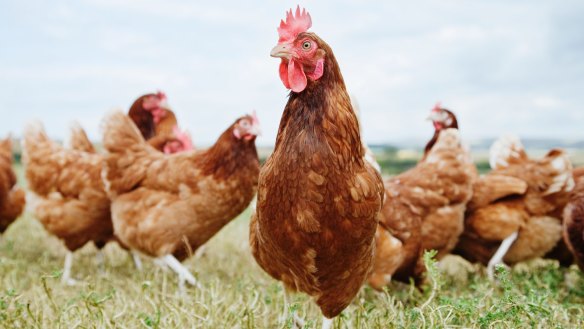
There's a picture on a tray of meat, of a cow in a paddock eating grass. From the image you might assume the animal led a life on a farm. But there is no way of knowing from the packaging how the animal was raised. It is quite possible the animal spent time in a feedlot, was fed antibiotics and given hormones.
The way meat animals actually live and die can be remarkably different from the images depicted by marketers. It's a divide so wide that some see it as a lie.
For example, under one industry standard a chicken sold as "free range" could be crowded into a shed with around 14 other birds on one square metre. Pork sold as "free range" could come from a pig living outdoors but with no upper limit on stocking density.
Consumer confusion has been exacerbated by the new Federal Government standard for free-range egg production, which allows 10,000 birds a hectare. This is more than six times the density of the previous voluntary stocking rate of 1500 birds a hectare. Then there are claims such as "bred for tenderness" and "specially selected". While these phrases sound good, they are simply unsubstantiated claims.
Those shopping for ethical meat may find the claims and confusing terms downright labyrinthine. We attempt to shine a light on the subterfuge and offer some sensible options.
Chicken
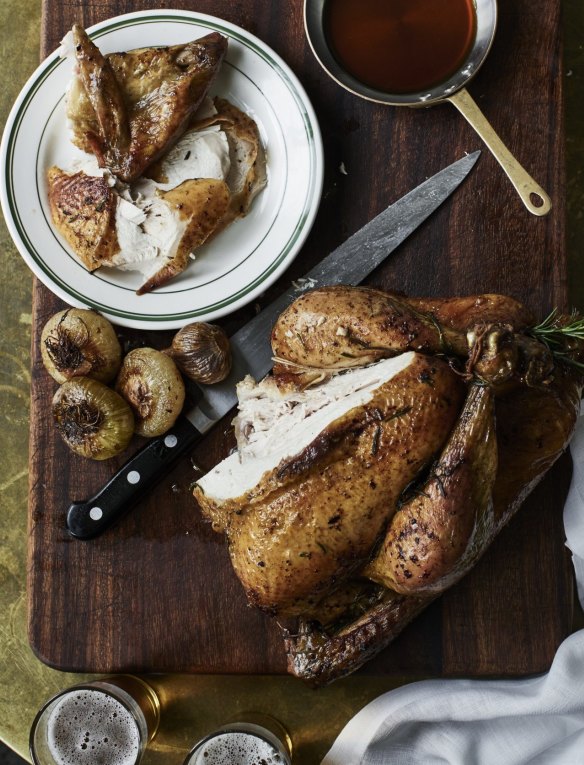
Bruce Burton, of Milking Yard Farm near Trentham in the Central Victorian Highlands, raises small flocks of free-range chickens, sending 50 to 100 birds to the abattoirs each week. The chooks live outdoors, grazing on grass and sheltered by blackwood trees by day, and locked in shelters at night. It is the type of rural idyll depicted in advertising.
Except this is not the reality for many birds raised under the Free Range Egg & Poultry Australia (FREPA) standard, used by national brands such as Lilydale and Bannockburn.
Under the standard there can be 30 kilograms of live birds (about 15) living on a piece of floor the size of a small card table. Under the standard it is possible for birds to have no night time, just dim light 24 hours a day if "it benefits the welfare of the birds". They must have eight hours' access to the outdoors, shade, shelter and palatable vegetation. The big problem is that when the sheds are full, the chooks can't get outside.
Under animal welfare codes, chickens must be fully feathered to free range, roughly 14 days after hatching. Considering most birds are processed after 42 days, this means the chooks have access to outdoors for four of their six-week life. To its credit the FREPA code does ban debeaking, toe trimming and growth-promoting antibiotics (growth-promoting hormones have not been used in the Australian poultry industry since the 1960s).
Burton's flocks are small, around 100 birds, and are the Somerlad breed. They live for 112 days, almost three times as long as supermarket chooks, and weigh between three and four kilograms. These pampered chooks cost up to $110, or about $25 a kilogram, compared with $7.50 for a free-range chicken from the supermarket. "Go now to the supermarket or butcher and look for a good steak," says Burton. "It will cost the same or more. It is just that the baseline chicken is so intensively raised it is cheap."
Most non-free-range supermarket chooks are now grown under the RSPCA Approved Farming standards. The RSPCA's imprimatur carries serious marketing clout. Under these standards chicks live under light 23 hours a day, perching must be provided at just 2.7 metres for every 1000 birds, live birds can be stocked at a density of up to 34 kilograms of live birds for every square metre, and growth-promoting antibiotics are frowned upon but not banned.
According to an RSPCA Australia spokesperson, "The RSPCA Approved Farming Scheme offers farmers a higher welfare alternative to conventional farming, and offers consumers a more humanely farmed product that's accessible where they shop. The RSPCA Approved Farming Scheme is the only animal welfare assurance program we know of where farms are actually visited and assessed at a minimum twice per year (not including unscheduled assessments)."
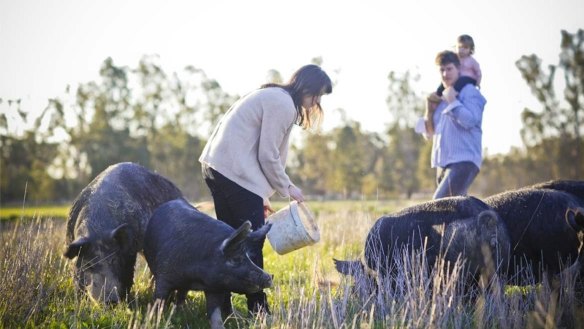
Pork
Currawongs call out among the ironbarks surrounding Michelle Webb's pig farm at Binnaway, near Coonabarabran in central western NSW. Her pigs live in paddocks sprawled over 120 hectares of her 1000-hectare property. The rest is bush. "I have problems with wedge-tailed eagles when the mums farrow [give birth] out in the open," she says.
Webb has crossbred large white landrace pigs with black berkshire pigs, resulting in pigs with good flavour and the mothers' temperament. Piglets are easily squashed by the sows. One solution found by the industry was the sow stall, basically a cage in which to keep individual female breeding pigs to prevent them lying down. These are considered inhumane and the Australian pork industry is voluntarily phasing them out. Coles has already stopped stocking pork from farms using sow stalls. Instead, the industry is using farrowing crates, a two-metre by 60 centimetre box in which the sow gives birth. It is designed to protect the piglets for the first six weeks.
The use of growth hormones such as reporcin is rife in the Australian pork industry. The drugs are injected in the last weeks of the pig's life to increase body weight. Antibiotics are also used. "The use of antibiotics in animal agriculture is a major risk factor in the development of drug-resistant bacteria," says animal rights activist Glenys Oogjes, chief executive of Animals Australia.
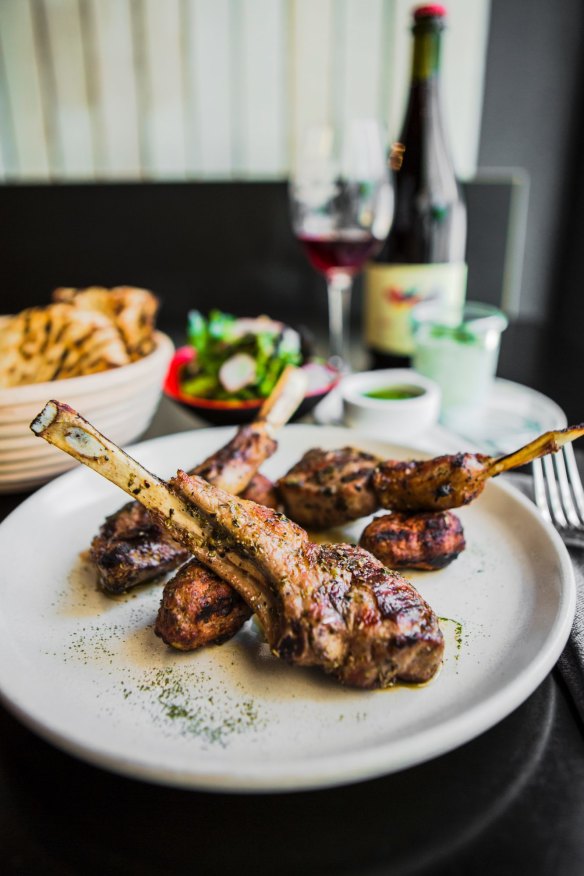
Free-range farming can also take a toll on the land, which can end up looking like the lunar surface. Lee McCosker from PROOF (Pasture Raised on Open Fields) says the APIQ (Australian Pork Industry Quality Assurance Programme) standard has no maximum stocking density. "This can mean there is no grass. So many people want to jump into this market and they don't understand the environmental degradation that pigs can cause."
A trend that consumers should look out for is pre-cooked pork from overseas. Cook-in-the-bag ribs from subsidised pork farmers in Europe and North America are being sold in Australia at prices that undermine the local pork industry.
Back on Webb's farm, kelpies Badger, Duke and Matilda work together to move the pigs from paddock to paddock. In the pigs' wake she plants fodder crops. "Pigs are happier when they are grazing on a crop," says Webb. "The farm looks great, too."
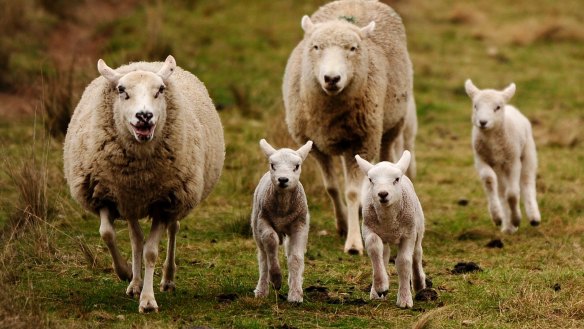
Lamb
Michele Lally is a sheep farmer from South Australia's Clare Valley. She is also a campaigner against misrepresentation in her industry. She famously took on Adelaide Crows captain Taylor Walker in 2015, publicly accusing the Adelaide pub he co-owns, the Alma Tavern, of misleading customers by selling a $29 lamb chop as her brand, Savannah Lamb. Lally hadn't sold meat to the hotel for six months. "The lamb industry is pretty good," she says. "You generally get what you ask for."
She does, however, suggest lamb lovers lower their expectations of being able to buy grass-fed lamb year-round. At the end of summer and in early autumn there is little grass in the paddocks, particularly in dryer parts of the country. "Farmers will feed grain to animals to put on enough condition before they are sent to the abattoirs." She says farmers sell lamb finished on grain as grass-fed. Even Humane Choice True Free Range accreditation does not rule out feeding grain or pellets to sheep in paddocks.
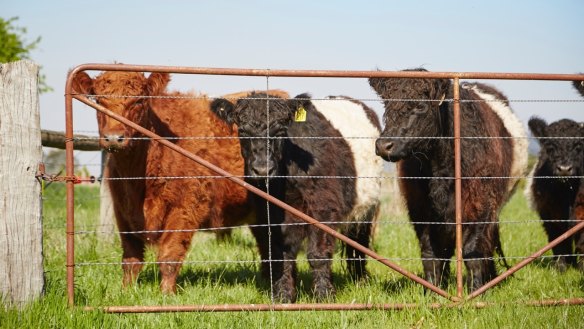
Beef
A large portion of Australian beef comes from cattle finished in feedlots. There they can be fed grain mixed with GMO cotton trash and implanted with hormone pellets. But you'd never know it. To have a "grain-fed" sticker on the label heifers have to be on the lot for 60 days and steers 70 days. Much of the beef on sale will have come from cattle fed for a period shorter than this.
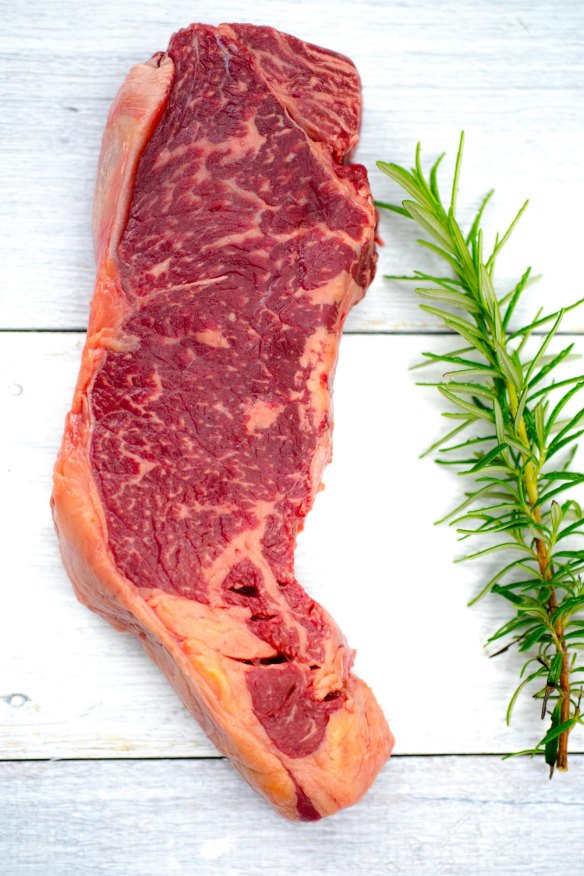
When it comes to hormones in beef, feed lot owners point the finger at grass-fed growers. The Australian Lot Feeders Association claim "twice as many HGPs [hormone growth promotants] are sold in the grass-fed cattle sector than in the cattle feedlot sector".
To cut through the bulldust, the Cattle Council of Australia has created a certification called Pasturefed Cattle Assurance System, symbolised by a cow with three grass-like green ticks on its belly. The certification system assures customers that the beef comes from cows that ate only grass and that no growth hormones or prophylactic antibiotics were used in raising the animals.
Susan Banks has no trouble assuring customers that her beef is raised to the highest standard. Based near Warragul in Victoria's West Gippsland, she raises charolais-angus cross cattle and sends them to the abattoirs at 30 months. Marketed under the Three Ridges label, the farm is run to the strict guidelines of biodynamic certification body Demeter.
Bank's animals are fed on excellent pasture and aren't given hormones, antibiotics or preventative veterinary chemicals. The beef she and her husband Franco Santucci produce is considered some of the most flavoursome in the country.
Like many farmers who produce excellent quality meat on a small scale, their workload is large but the monetary rewards are not. "It is hard work, both in labour and marketing. But what price do you put on a beautiful farm that is sustainable and a herd of cattle that are healthy and happy?"
Richard Cornish is the author of My Year Without Meat, published in 2016 by Melbourne University Press.
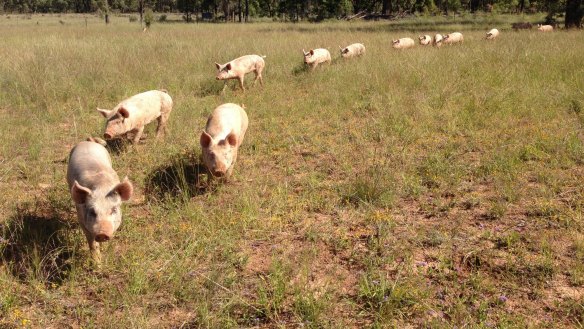
Ethical way of plating up
Chicken
NSW
The Sommerlad family from Tenterfield is leading the chicken revolution with a chook bred to free range in the great Australian outdoors. sommerladpoultry.com.au
An hour south of Coffs Harbour, the Meehan family has an integrated farm where it grows pasture-raised chicken, beef and pork. facebook.com/HillsideMeatsNSW
VIC
In Central Victoria, Bruce and Roz Burton have recreated an Asian jungle to make the chooks feel right at home. milkingyardfarm.com.au
The chickens at Yapunyah Meadow Grazed Chickens have fertilised once-rocky goldfields near Bendigo into lush pasture. Big birds with massive flavour. facebook.com/Yapunyah-Meadow-Grazed-Chickens-136957236343836/
Pork
NSW
The pigs from Pillar Rock Pork live in beautiful sandstone ridge country. They end up on plates in well-known restaurants across Sydney. pillarrockpork.com.au
The pigs at Melanda Park, on the banks of the Hawksbury River, are a big part of the fertility cycle on this farm, which also produces vegetables. Available at farmers' markets. melandapark.com.au
VIC
The family behind Bundarra Berkshires, on the Murray in western NSW, grow tasty pork and make excellent smallgoods from it. They sell almost all their meat into Melbourne. bundarraberkshires.com.au
Christine Ross is a pioneer of the new wave of ethical and rare breed pig growers and the meat from her large black pigs is always delicious. largeblackpigs.com.au
Lamb
NSW
Moorlands Lamb is certified biodynamic and eats exceptionally well. Pre-butchered packs are delivered to designated retail pick-up points in Sydney, Canberra, Wollongong and the Blue Mountains. moorlandslamb.com.au
Lynden Biodynamic Farm specialises in white Suffolk sheep, which do exceptionally well in Australian conditions. Available at Sydney's best-known ethical butcher, Feather and Bone in Marrickville. featherandbone.com.au
VIC
Try pasture-fed beef and lamb grown on an organic farm in the Strzelecki Ranges by Sally Ruljancich and Colin Trudgen. colinandsallys.com.au
Transporting animals to the abattoir can cause stress to animals and affect meat quality. The lambs on Koallah Farm in the Western District are killed on-site, meaning no transport trauma. koallahfarm.com.au
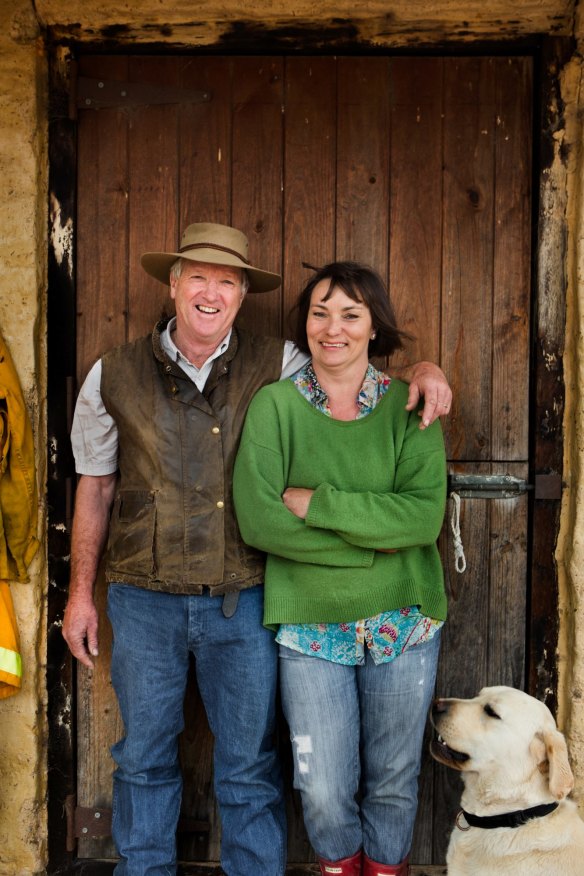
Beef
NSW
In the NSW Central Tablelands, Rob Lennon grazes Wagyu cattle on deep-rooted native pastures, producing juicy meat with excellent marble scores. gundooeeorgaics.com.au
From near Gunnedah in the New England region comes organic beef delivered across central NSW and lower North Shore. myallsprings.com.au
VIC
Arguably the best beef in the state comes from Warialda Beef's belted galloways. Allen and Lizette Snaith often carry unusual cuts for char-grilling or slow cooking. wbgbeef.com.au
Three Ridges beef is from older, larger cattle meaning the animals have had a chance to develop flavour. The farm is certified biodynamic. threeridges.com.au
